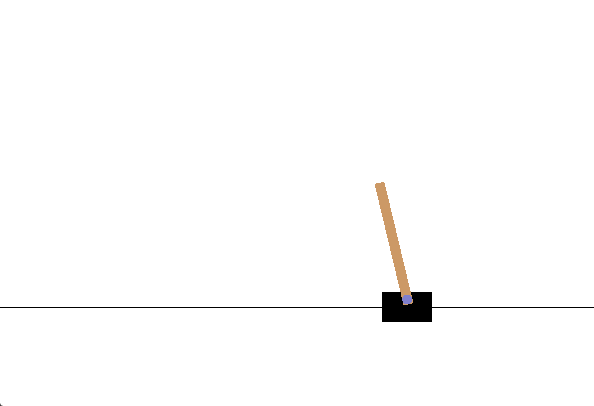Howto 17 - (RL) Advanced training with stagnation detection
Ver. 1.2.1 (2022-02-27)
This module demonstrates advanced training with evaluation and stagnation detection.
Prerequisites
- Please install the following packages to run this examples properly:
Results

After the multiple environments are initialised, the training will run for the specified amount of limits. When stagnation is detected, the training will be stopped. Along with the training result summary, the logs are stored in the mentioned location
YYYY-MM-DD HH:MM:SS.SSSSSS W Results RL: ------------------------------------------------------------------------------
YYYY-MM-DD HH:MM:SS.SSSSSS W Results RL: -- Training Results of run 0
YYYY-MM-DD HH:MM:SS.SSSSSS W Results RL: ------------------------------------------------------------------------------
YYYY-MM-DD HH:MM:SS.SSSSSS W Results RL: ------------------------------------------------------------------------------
YYYY-MM-DD HH:MM:SS.SSSSSS W Results RL: -- Scenario : RL-Scenario Matrix
YYYY-MM-DD HH:MM:SS.SSSSSS W Results RL: -- Model : Agent Smith
YYYY-MM-DD HH:MM:SS.SSSSSS W Results RL: -- Start time stamp : YYYY-MM-DD HH:MM:SS.SSSSSS
YYYY-MM-DD HH:MM:SS.SSSSSS W Results RL: -- End time stamp : YYYY-MM-DD HH:MM:SS.SSSSSS
YYYY-MM-DD HH:MM:SS.SSSSSS W Results RL: -- Duration : HH:MM:SS.SSSSSS
YYYY-MM-DD HH:MM:SS.SSSSSS W Results RL: -- Start cycle id : 0
YYYY-MM-DD HH:MM:SS.SSSSSS W Results RL: -- End cycle id :
YYYY-MM-DD HH:MM:SS.SSSSSS W Results RL: -- Training cycles :
YYYY-MM-DD HH:MM:SS.SSSSSS W Results RL: -- Evaluation cycles :
YYYY-MM-DD HH:MM:SS.SSSSSS W Results RL: -- Adaptations :
YYYY-MM-DD HH:MM:SS.SSSSSS W Results RL: -- High score :
YYYY-MM-DD HH:MM:SS.SSSSSS W Results RL: -- Results stored in : "C:\Users\%username%\YYYY-MM-DD HH:MM:SS Training RL"
YYYY-MM-DD HH:MM:SS.SSSSSS W Results RL: -- Training Episodes : 120
YYYY-MM-DD HH:MM:SS.SSSSSS W Results RL: -- Evaluations : 25
YYYY-MM-DD HH:MM:SS.SSSSSS W Results RL: ------------------------------------------------------------------------------
YYYY-MM-DD HH:MM:SS.SSSSSS W Results RL: ------------------------------------------------------------------------------
- In the folder, there should be some files including:
agent_actions.csv
env_rewards.csv
env_states.csv
evaluation.csv
summary.csv
Agent 0 Smith-1(0).pkl
Agent 1 Smith-2(1).pkl
The figure plot is not initialised in this example but the logged metrices are available to access in the csv file.
Example Code
## -------------------------------------------------------------------------------------------------
## -- Project : MLPro - A Synoptic Framework for Standardized Machine Learning Tasks
## -- Package : mlpro
## -- Module : Howto 17 - Advanced training with stagnation detection
## -------------------------------------------------------------------------------------------------
## -- History :
## -- yyyy-mm-dd Ver. Auth. Description
## -- 2021-12-11 0.0.0 DA Creation
## -- 2021-12-12 1.0.0 DA Released first version
## -- 2022-02-04 1.1.0 DA Introduction of parameter p_stagnation_entry
## -- 2022-02-10 1.2.0 DA Introduction of parameter p_end_at_stagnation
## -- 2022-02-27 1.2.1 SY Refactoring due to auto generated ID in class Dimension
## -------------------------------------------------------------------------------------------------
"""
Ver. 1.2.1 (2022-02-27)
This module demonstrates advanced training with evaluation and stagnation detection.
"""
from mlpro.rl.models import *
from mlpro.rl.pool.envs.multicartpole import MultiCartPole
import random
from pathlib import Path
# 1 Implement your own agent policy
class MyPolicy (Policy):
C_NAME = 'MyPolicy'
def set_random_seed(self, p_seed=None):
random.seed(p_seed)
def compute_action(self, p_state: State) -> Action:
# 1 Create a numpy array for your action values
my_action_values = np.zeros(self._action_space.get_num_dim())
# 2 Computing action values is up to you...
for d in range(self._action_space.get_num_dim()):
my_action_values[d] = random.random()
# 3 Return an action object with your values
return Action(self._id, self._action_space, my_action_values)
def _adapt(self, *p_args) -> bool:
# 1 Adapting the internal policy is up to you...
self.log(self.C_LOG_TYPE_I, 'Sorry, I am a stupid agent...')
# 2 Only return True if something has been adapted...
return False
# 2 Implement your own RL scenario
class MyScenario (RLScenario):
C_NAME = 'Matrix'
def _setup(self, p_mode, p_ada, p_logging):
# 1 Setup Multi-Agent Environment (consisting of 3 OpenAI Gym Cartpole envs)
self._env = MultiCartPole(p_num_envs=3, p_reward_type=Reward.C_TYPE_EVERY_AGENT, p_logging=p_logging)
# 2 Setup Multi-Agent
# 2.1 Create empty Multi-Agent
multi_agent = MultiAgent(
p_name='Smith',
p_ada=True,
p_logging=p_logging
)
# 2.2 Add Single-Agent #1 with own policy (controlling sub-environment #1)
ss_ids = self._env.get_state_space().get_dim_ids()
as_ids = self._env.get_action_space().get_dim_ids()
multi_agent.add_agent(
p_agent=Agent(
p_policy=MyPolicy(
p_observation_space=self._env.get_state_space().spawn([ss_ids[0],ss_ids[1],ss_ids[2],ss_ids[3]]),
p_action_space=self._env.get_action_space().spawn([as_ids[0]]),
p_buffer_size=1,
p_ada=True,
p_logging=p_logging
),
p_envmodel=None,
p_name='Smith-1',
p_id=0,
p_ada=True,
p_logging=p_logging
),
p_weight=0.3
)
# 2.3 Add Single-Agent #2 with own policy (controlling sub-environments #2,#3)
multi_agent.add_agent(
p_agent=Agent(
p_policy=MyPolicy(
p_observation_space=self._env.get_state_space().spawn([ss_ids[4],ss_ids[5],ss_ids[6],ss_ids[7],ss_ids[8],ss_ids[9],ss_ids[10],ss_ids[11]]),
p_action_space=self._env.get_action_space().spawn([as_ids[1],as_ids[2]]),
p_buffer_size=1,
p_ada=True,
p_logging=p_logging
),
p_envmodel=None,
p_name='Smith-2',
p_id=1,
p_ada=True,
p_logging=p_logging
),
p_weight=0.7
)
# 2.4 Adaptive ML model (here: our multi-agent) is returned
return multi_agent
# 3 Create scenario and start training
if __name__ == "__main__":
# 3.1 Parameters for demo mode
cycle_limit = 1500
adaptation_limit = 50
stagnation_limit = 5
stagnation_entry = 3
end_at_stagnation = True
eval_frequency = 10
eval_grp_size = 5
logging = Log.C_LOG_WE
visualize = True
path = str(Path.home())
else:
# 3.2 Parameters for internal unit test
cycle_limit = 50
adaptation_limit = 5
stagnation_limit = 5
stagnation_entry = 1
end_at_stagnation = True
eval_frequency = 2
eval_grp_size = 1
logging = Log.C_LOG_NOTHING
visualize = False
path = None
# 3.3 Create and run training object
training = RLTraining(
p_scenario_cls=MyScenario,
p_cycle_limit=cycle_limit,
p_adaptation_limit=adaptation_limit,
p_eval_frequency=eval_frequency,
p_eval_grp_size=eval_grp_size,
p_stagnation_limit=stagnation_limit,
p_stagnation_entry=stagnation_entry,
p_end_at_stagnation=end_at_stagnation,
p_score_ma_horizon=3,
p_success_ends_epi=True,
p_path=path,
p_visualize=visualize,
p_logging=logging )
training.run()